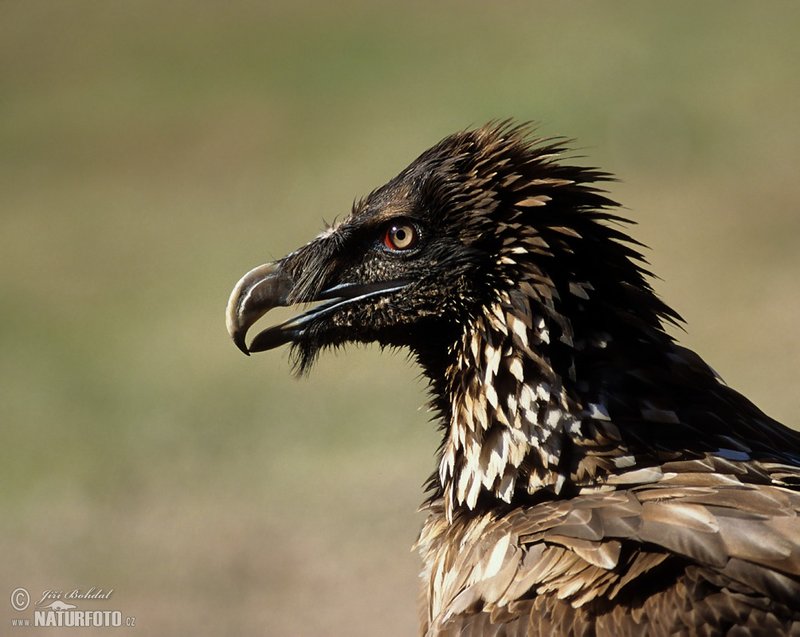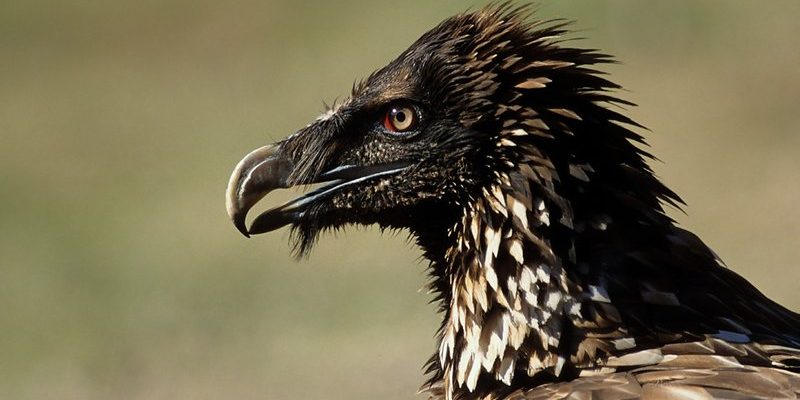
The Bearded Vulture, scientifically known as *Gypaetus barbatus*, is a magnificent bird that doesn’t just capture attention with its striking appearance but also with its intriguing behaviors. Found mostly in mountainous regions of Europe, Asia, and Africa, this bird has some pretty unique characteristics that make it one of nature’s true wonders. So, grab your coffee, and let’s explore ten things you might not know about the Bearded Vulture.
1. Stunning Appearance
The Bearded Vulture is hard to overlook with its robust body and long, sweeping wings. Interestingly, its plumage is a beautiful mix of reddish-brown, black, and white, which can make it look like it’s wearing a fashionable outfit. But here’s the kicker: the coloration comes from the iron-rich minerals in its environment. When these birds bathe in mud or dust, they end up staining their feathers, giving them that signature rusty look. It’s like nature’s way of accessorizing!
Beyond the plumage, you can spot a distinct beard-like tuft of feathers on its neck, which is where the “bearded” in its name comes from. This feature adds to its majestic look and gives it a regal, almost noble presence as it glides in the sky. Honestly, if you ever see one soaring above, it almost feels like you’re witnessing royalty in the avian world.
2. The Bone Specialist
You might be wondering why the Bearded Vulture is called the “bone breaker.” Here’s the thing: this bird has a specialized diet that largely consists of bones. While many vultures feast on carrion, the Bearded Vulture is unique in its approach. It’s known to drop bones from impressive heights to shatter them on rocks below. This clever method allows it to access the nutrient-rich marrow inside.
What’s even more fascinating is how skilled these birds are at their craft. They can drop bones from heights as high as 15,000 feet! Imagine a bird taking on the role of a skilled chef, carefully preparing its meal. And because they rely on bones, they develop a remarkable sense for locating them, often scavenging from the remains of larger animals like sheep or deer. Talk about specialized eating!
3. Unique Nesting Habits
Nesting is a serious business for Bearded Vultures. They typically choose high cliff ledges, which offer both safety and a panoramic view. These nests are large and made from sticks, stones, and other durable materials. What’s cool is that the same pair of vultures may return to the same nest year after year, adding to it each time. It’s like a family heirloom that gets passed down.
The female lays one to three eggs, and both parents share the responsibility of incubating them. Once the chicks hatch, the parents work tirelessly to feed and protect them. They often start by feeding them small bones before gradually introducing larger ones as the chicks grow. This isn’t just parenting; it’s a whole training program on how to become a successful bone breaker!
4. Lifelong Partnerships
Bearded Vultures are known for forming lifelong bonds with their partners. Once they find a mate, they stick together through thick and thin—much like a well-matched team. You might catch these birds engaging in acrobatic aerial displays or sharing food, which strengthens their bond. It’s heartwarming to think about how these majestic creatures are so committed to one another.
Their courtship rituals are quite the sight, too. They’ll soar high together and perform spectacular dives, showing off their agility and strength. This not only helps them bond but also allows them to showcase their prowess to potential mates. Honestly, it’s as if they’re trying to impress each other—just like we do on date nights!
5. Slow Reproductive Rate
One of the challenges Bearded Vultures face is their slow reproductive rate. It usually takes around five years for them to reach maturity, and even then, they may only produce one or two eggs per breeding season. This slow-paced approach can be a hurdle, especially when it comes to population recovery. Over the years, habitat loss and hunting have severely affected their numbers, putting them at risk in certain areas.
Conservation efforts are underway to help protect these magnificent birds. Organizations work tirelessly to preserve their habitats and raise awareness about their significance in the ecosystem. It’s essential to support these initiatives, as every egg laid can make a huge difference for the future of Bearded Vultures.
6. Incredible Soaring Abilities
One of the most iconic traits of the Bearded Vulture is its soaring ability. These birds can glide effortlessly for hours without flapping their wings, thanks to their massive wingspan that can reach up to 9 feet. This not only conserves energy but also allows them to survey vast areas for potential food sources. Imagine being able to navigate the skies with such grace and finesse!
Their flight is so impressive that they can rise to great heights, sometimes even above 20,000 feet. This aerial mastery not only aids in foraging but also helps them escape predators and other threats. Watching a Bearded Vulture soar is a reminder of how adaptable and resilient nature can be.
7. A Cultural Significance
In many cultures, the Bearded Vulture has held a special place in folklore and symbolism. For example, in certain regions of the Himalayas, locals believe that these birds are a bridge between the living and the dead. They often associate them with spirituality and the afterlife, adding a layer of mystique to their already fascinating persona.
In some traditions, Bearded Vultures are revered as symbols of strength and renewal, reminding people to embrace transformation. This cultural significance enriches our understanding of these birds and highlights the deeper connections we can have with nature. When you see one, you’re not just looking at a bird; you’re witnessing a creature that’s woven into the fabric of local heritage.
8. Their Role in the Ecosystem
Bearded Vultures play a crucial role in their ecosystem, acting as nature’s cleanup crew. By feeding on bones and carrion, they help ensure that animal remains are recycled back into the environment. This not only prevents the spread of disease but also supports nutrient cycling in the ecosystem. It’s like they’re doing their part to keep nature tidy!
Without these magnificent birds, there could be an overaccumulation of remains, leading to ecological imbalance. So, the next time you see one, remember that they are doing crucial work that benefits all life forms around them. Isn’t it amazing how interconnected everything is in our world?
9. Adaptations to Harsh Environments
Living in mountainous terrains, Bearded Vultures have developed some incredible adaptations. Their strong wings allow them to navigate turbulent winds, while their sharp beaks are perfect for cracking open bones. Additionally, their keen eyesight helps them spot food from miles away. It’s almost like they have superpowers tailored to their environment!
As the climate changes and habitats shift, these birds show remarkable resilience. They can thrive in extreme conditions, ranging from arid mountains to snowy peaks. However, it’s essential for us to recognize the challenges they face and support conservation programs to ensure they continue to thrive in their natural habitats.
10. Conservation Efforts
Given their declining population, conservation efforts for Bearded Vultures have ramped up in recent years. Many organizations are focused on habitat preservation, monitoring populations, and educating communities about these birds. Initiatives to create safe nesting sites and reduce human interference are crucial steps in ensuring their survival.
If you’re passionate about wildlife, consider getting involved in conservation efforts. It could be as simple as supporting local organizations, spreading awareness, or adopting sustainable practices that benefit the environment. Every little bit helps, and together, we can contribute to the future of these incredible birds.
In conclusion, the Bearded Vulture is more than just a bird; it’s a symbol of resilience, ecological balance, and the beauty of nature. With their unique adaptations and fascinating behaviors, they remind us of the wonders of the natural world. Whether soaring high in the sky or delicately cracking bones, these creatures capture our imagination and urge us to protect our planet. So, the next time you hear about vultures, remember the Bearded Vulture and the remarkable role it plays in our ecosystem.

